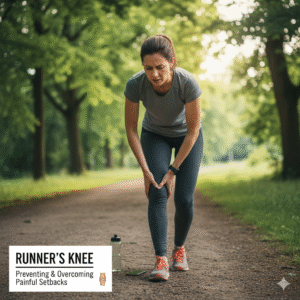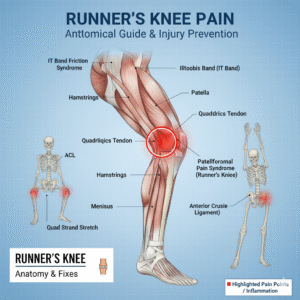
Running is one of the most effective ways to stay fit, boost your mood, and improve cardiovascular health. But if you’ve ever experienced knee pain after running, you’re not alone. Knee discomfort is a common complaint among runners, whether you’re a beginner or a seasoned athlete. Understanding why it happens and how to manage it is essential for keeping your knees healthy and staying on track with your running goals.
Why Do Runners Get Knee Pain?
Knee pain after running can stem from a variety of causes, including:
Overuse or Repetitive Strain
Running puts repetitive stress on your knees. If you increase mileage or intensity too quickly, it can lead to inflammation in the tendons, ligaments, or cartilage.Runner’s Knee (Patellofemoral Pain Syndrome)
This occurs when the kneecap doesn’t move properly over the thigh bone, causing pain in the front of the knee.Iliotibial (IT) Band Syndrome
Pain on the outer side of the knee can be caused by a tight IT band—a thick strip of tissue that runs from your hip to your shin.Weak Muscles or Imbalance
Weak quadriceps, hamstrings, or glute muscles can alter your running mechanics, putting extra strain on your knees.Improper Footwear or Running Surface
Worn-out shoes, poor arch support, or running on hard surfaces can increase knee stress and lead to discomfort.
Signs You Should Not Ignore
Most knee pain resolves with rest, but watch out for warning signs:
Swelling or redness around the knee
Severe pain that doesn’t improve with rest
Popping or locking of the knee
Inability to bear weight on the leg
If these symptoms persist, consult a healthcare professional to rule out serious conditions like ligament injuries or meniscus tears.
What to Do About Knee Pain After Running
Here are some practical steps to prevent and manage knee pain:
1. Rest and Ice
Take a break from running for a few days.
Apply ice to the knee for 15–20 minutes, 2–3 times per day to reduce inflammation.
2. Strengthening Exercises
Strengthen your quads, hamstrings, glutes, and hip muscles to support knee stability.
Examples: straight-leg raises, glute bridges, and mini-squats.
3. Stretching and Foam Rolling
Stretch your quads, hamstrings, calves, and IT band regularly.
Use a foam roller to release tight muscles and fascia around your knees and thighs.
4. Check Your Shoes and Running Form
Replace worn-out shoes every 300–500 miles.
Consider getting a gait analysis to correct any running form issues.
5. Gradual Training Progression
Increase running distance or intensity slowly—no more than 10% per week.
Include cross-training activities like cycling or swimming to reduce knee stress.
When to See a Doctor
If knee pain persists despite rest and self-care, or if you experience swelling, instability, or severe discomfort, see a physiotherapist or orthopedic specialist. Early intervention can prevent long-term damage and help you return to running safely.
Conclusion
Knee pain after running is common, but it doesn’t have to stop you from staying active. By listening to your body, strengthening supporting muscles, wearing proper footwear, and stretching regularly, you can prevent knee injuries and keep running pain-free.

